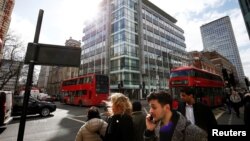Parched cities should do more to get wetter and cooler, according to a report published on Tuesday by Arup, a design and engineering consultancy.
Just over a third of the world's land surface is classified as arid, meaning it has a natural lack of fresh water or rain.
But this area is set to increase, the report said, as climate change causes more variable weather, such as droughts and extreme heat, along with greater migration to cities.
As the global population expands and the planet warms, demand for water is rising, while the quality and reliability of our water supply is declining, the 2018 edition of the U.N.World Water Development Report warned on Monday.
"Most [cities] are still being planned and designed based on a global city-making paradigm from the 1950s. Cities need to adapt strategies," said Hrvoje Cindric, Middle East urbanism leader at Arup, in a statement.
Rather than relying on air-conditioning and traditional urban planning methods, cities should take innovative steps to cool down, such as changing building orientations or planting more greenery, it said.
Here are five ways for dry, arid cities to cool down:
- Green roofs and walls: This involves selecting plants that maximize shade and shelter, reduce noise and glare, and limit dust and air pollution. The plants can be woven into roof or wall designs in arid climates. The Brewbooks Cactus Garden Roof in Los Angeles is a good example, the report found.
- Fog and dew harvesting: New technology allows nets to catch and extract large amounts of water from dew and fog, even in arid environments with low levels of humidity. That is done in Morocco and is planned for Dubai.
- Cool pavements: Small tweaks to existing pavement designs can cool a city rapidly, the report found. Los Angeles has begun coating its streets with a special paint, CoolSeal, to cut the heat, with initial results showing a decrease in ambient temperatures of about 6.6 degrees Celsius (12F).
- Energy-efficient buildings: Buildings could be designed to be less reliant on air-conditioning. The Al Bahar Towers in Abu Dhabi have a modular shading system that opens and closes to self-shade, like sunglasses, as the sun moves around the building. The system is predicted to reduce the solar energy entering the building by 20 percent, according to the report.
- Open-air living: Making urban public spaces more attractive and cool could have the knock-on effect of improving the social and economic success of a city, said Arup. By cooling down urban centers, cities can promote walking, socializing, outdoor art and activities that improve well-being and promote a more open-air lifestyle.
Source: ARUP - The Cities Alive: Rethinking Cities in Arid Environments









